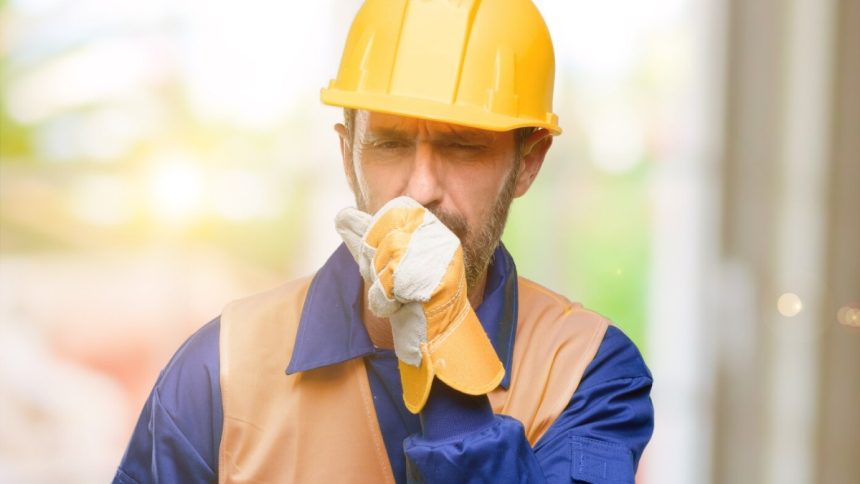Respiratory hazards are often associated with industries like construction or mining, where workers are exposed to dust, chemicals, and fumes. However, many everyday work environments also harbor significant respiratory risks that are frequently overlooked. Employees across various sectors, from office buildings to retail stores, may be exposed to pollutants that can affect their lung health over time.
Understanding these often-overlooked respiratory hazards is crucial for both employers and employees. By recognizing the risks and taking proactive measures, workplaces can reduce the incidence of respiratory conditions, ensuring a healthier and safer environment for everyone involved.
Indoor Air Quality: A Silent Threat
Indoor air quality (IAQ) is a critical aspect of workplace health that often goes unnoticed. Poor ventilation, mold growth, and volatile organic compounds (VOCs) from office equipment and cleaning products can significantly degrade air quality. Employees working in poorly ventilated spaces may experience symptoms like headaches, fatigue, and respiratory irritation, which can lead to more serious conditions such as asthma or chronic bronchitis.
Employers should prioritize regular maintenance of HVAC systems, ensure adequate ventilation, and monitor the workplace for signs of poor air quality. Simple measures like using low-VOC products and maintaining cleanliness can drastically improve IAQ and reduce the risk of respiratory issues among workers.
Dust and Particulates: Not Just a Construction Problem
Dust and particulates are commonly associated with construction sites but can also be a problem in less obvious settings. For instance, retail environments, warehouses, and offices can generate significant dust from materials like paper, textiles, and packaging. Prolonged exposure to dust can lead to respiratory issues such as occupational asthma or chronic obstructive pulmonary disease (COPD).
To mitigate these risks, workplaces should implement regular cleaning schedules, use air purifiers, and ensure that dust-producing activities are conducted with proper ventilation. Employees should also be encouraged to report any respiratory symptoms early to prevent the development of more severe conditions.
Chemical Exposure in Unexpected Places
Chemical exposure is not limited to industrial environments; it can also occur in everyday workplaces. For example, office workers may be exposed to chemicals from cleaning products, printing inks, or even air fresheners. Over time, exposure to these chemicals can lead to respiratory problems, allergic reactions, or even long-term damage to lung function.
Employers should carefully select cleaning and office products with minimal chemical content and provide proper protective equipment when necessary. Additionally, educating employees about the potential risks of chemical exposure and encouraging them to use products safely can help minimize these overlooked hazards.
Biological Contaminants: The Hidden Dangers
Biological contaminants such as bacteria, viruses, and mold can pose significant respiratory risks in any work environment. Poorly maintained HVAC systems, water damage, or high humidity levels can create breeding grounds for these contaminants. Employees exposed to biological hazards may experience symptoms ranging from mild respiratory irritation to severe infections or allergic reactions.
To combat these risks, workplaces should ensure regular cleaning and maintenance of ventilation systems, promptly address any signs of water damage, and control humidity levels. Providing adequate sick leave policies can also prevent the spread of contagious illnesses in the workplace, protecting individual and collective respiratory health.
Legal Protections for Workers Affected by Respiratory Hazards
Workers who develop respiratory conditions due to workplace exposure may be entitled to compensation under workers’ compensation laws. These laws are designed to protect employees who suffer from work-related injuries or illnesses by covering medical expenses, lost wages, and other related costs. However, navigating the legal process can be complex, particularly when proving that a respiratory condition is linked to workplace exposure.
Consulting with specialized Phoenix workers comp lawyers can help affected workers understand their rights and successfully file a claim. These professionals can assist in gathering the necessary evidence, representing the worker in legal proceedings, and negotiating with employers or insurance companies to ensure fair compensation.
Preventative Measures to Protect Respiratory Health
Preventing respiratory hazards in everyday work environments requires a proactive approach. Employers should conduct regular risk assessments to identify potential respiratory hazards and take steps to eliminate or reduce exposure. This might include improving ventilation, implementing safe work practices, and providing regular training on the risks associated with specific tasks or materials.
In addition to these measures, promoting a health and safety culture is essential. Encouraging employees to report any concerns about air quality or respiratory symptoms and acting on those reports promptly can help prevent the development of serious respiratory conditions. By prioritizing respiratory health, workplaces can create a safer, more productive environment for all employees.
The Long-Term Impact of Overlooked Respiratory Hazards
The long-term impact of overlooked respiratory hazards in the workplace can have serious and lasting consequences. Here are some key points to consider:
- Chronic Health Issues: Exposure to respiratory hazards can lead to conditions such as asthma, Chronic Obstructive Pulmonary Disease (COPD), and occupational lung diseases, which can severely impact a worker’s quality of life.
- Significant Medical Expenses: These conditions often require ongoing treatment, leading to substantial medical costs and a need for continuous care.
- Reduced Work Capacity: Respiratory conditions can diminish a worker’s ability to perform their job, potentially leading to decreased productivity and financial instability.
- Permanent Disability: In severe cases, respiratory conditions may result in permanent disability, forcing workers to seek alternative employment or rely on disability benefits.
- Importance of Early Intervention: Addressing respiratory hazards promptly can prevent these long-term consequences, protecting employees’ health and well-being.
The Importance of Regular Health Screenings for Early Detection
Regular health screenings are crucial in detecting respiratory conditions caused by workplace exposure. Many respiratory issues develop gradually, and workers may not notice symptoms until the condition has progressed significantly. Health screenings, including lung function tests and respiratory assessments, can identify early signs of trouble, allowing for timely intervention and treatment.
Employers should incorporate routine health screenings into their workplace health and safety programs, particularly in environments with respiratory hazards. Monitoring employees’ respiratory health regularly can address potential issues before they become severe, reducing the risk of chronic illness and ensuring that workers receive the care they need to maintain their health and productivity. Additionally, health screenings provide valuable data that can help employers assess the effectiveness of their safety measures and make informed decisions about workplace practices.
Lynn Martelli is an editor at Readability. She received her MFA in Creative Writing from Antioch University and has worked as an editor for over 10 years. Lynn has edited a wide variety of books, including fiction, non-fiction, memoirs, and more. In her free time, Lynn enjoys reading, writing, and spending time with her family and friends.















